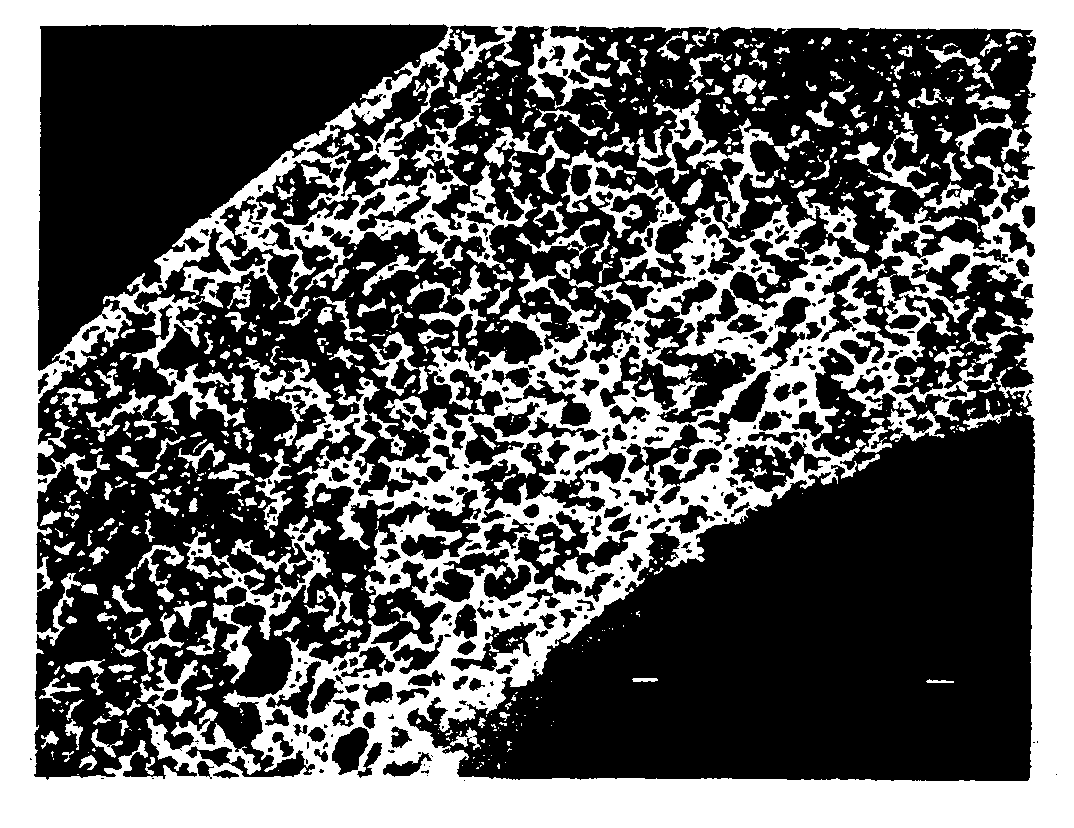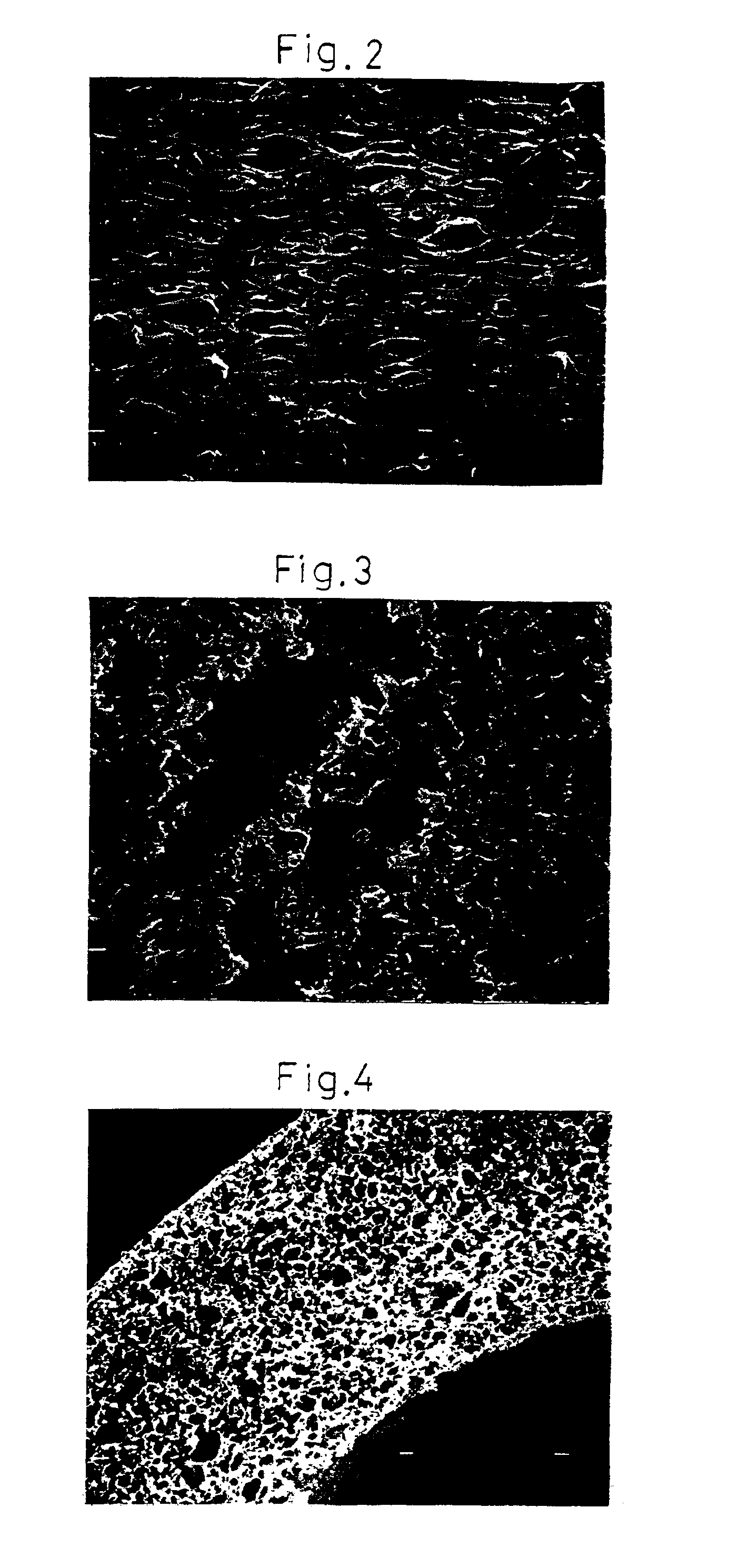Porous hollow fiber membranes and method of making the same
a technology of hollow fiber and membrane, which is applied in the field of porous hollow fiber membrane, can solve the problems of inability to achieve the purification level of impounded water, low separation precision, and unreliable sanitation of existing waterworks facilities equipped with flocculating pools in combination with sand filtering pools, etc., and achieves excellent filtering performance, low cost of preparing water, and excellent water quality.
- Summary
- Abstract
- Description
- Claims
- Application Information
AI Technical Summary
Benefits of technology
Problems solved by technology
Method used
Image
Examples
example 1
[0085]A spinning dope 20 wt % of polysulfone (UDEL-P1800, manufactured by and available from AMOCO Japan, Ltd. Hereinafter, this particular polysulfone is referred to as PSf.), 6 wt % of ethylene glycol (hereinafter referred to as EG), 18 wt % of silicon oxide having an average particle size of 4.5 μm, and 54 wt % of N, N-dimethyl acetamide (hereinafter referred to as DMAc) was prepared by the following procedure. Specifically, after EG has been dissolved into DMAc, the silica powder was uniformly dispersed in the DMAc solution by the use of a home jettor to provide a dispersed liquid which was subsequently added with PSf. The resultant mixture was then stirred for 8 hours at 60° C. to thereby dissolve the PSf, resulting in the white-colored slurry in which the silicon oxide was uniformly dispersed. This slurry was used as the spinning dope.
[0086]The spinning dope obtained in the manner described above was thereafter degassed. While the degassed spinning dope was maintained at 50° C...
example 2
[0089]In a manner similar to that in Example 1, except that the use was made of the spinning dope containing 20 wt % of PSf, 6 wt % of EG, 20 wt % of silicon oxide having an average particle size of 11 μm, 2 wt % of silicon oxide having an average particle size of 4.5 μm and 52 wt % of DMAc, the hollow fiber membranes were manufactured. The resultant hollow fiber membranes were found to have a pure water permeate flow of 520,000 L / m2 / hr / 100 kPa and a particle cutoff of 5.0 μm.
example 3
[0090]In a manner similar to that in Example 1, except that the use was made of the spinning dope containing 20 wt % of PSf, 4 wt % of EG, 14 wt % of silicon oxide having an average particle size of 1.5 μm, and 62 wt % of DMF, the hollow fiber membranes were manufactured. The resultant hollow fiber membranes were found to have a pure water permeate flow of 39,000 L / m2 / hr / 100 kPa and a particle cutoff of 1.2 μm.
PUM
| Property | Measurement | Unit |
|---|---|---|
| Temperature | aaaaa | aaaaa |
| Length | aaaaa | aaaaa |
| Length | aaaaa | aaaaa |
Abstract
Description
Claims
Application Information
 Login to View More
Login to View More - R&D
- Intellectual Property
- Life Sciences
- Materials
- Tech Scout
- Unparalleled Data Quality
- Higher Quality Content
- 60% Fewer Hallucinations
Browse by: Latest US Patents, China's latest patents, Technical Efficacy Thesaurus, Application Domain, Technology Topic, Popular Technical Reports.
© 2025 PatSnap. All rights reserved.Legal|Privacy policy|Modern Slavery Act Transparency Statement|Sitemap|About US| Contact US: help@patsnap.com



